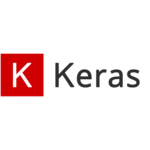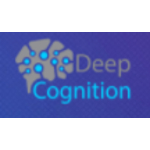TechnologyCounter provides genuine, unbiased real user reviews to help buyers make informed decisions. We may earn a referral fee when you purchase through our links, at no extra cost to you.
List of Best Deep Learning Software
Showing 1 - 14 of 14 productsNeural Designer is an innovative software designed to revolutionize data analysis and modeling. By combining the power of artificial intelligence and machine learning algorithms, it provides a user-friendly platform to effectively analyze and predict...Read Neural Designer Reviews
Founded in 2013, Clarifai Organization has revolutionized the world of computer vision with its advanced technology. Using state-of-the-art AI algorithms, the organization provides accurate visual recognition solutions to various industries. Empoweri...Read Clarifai Organization Reviews
Express Scribe is a transcription software that is designed to simplify the process of converting audio recordings to written documents. With its user-friendly interface features, Express Scribe makes transcription a seamless is a task for profession...Read Express Scribe Reviews
MARVEL.ai the latest innovation in artificial intelligence for businesses. With its advanced technology, MARVEL.ai enables companies to streamline operations, improve productivity, and enhance customer experiences. Say goodbye to traditional methods...Read MARVEL.ai Reviews
H2O the revolutionary software thats taking the data science world by storm. With its advanced algorithms and user-friendly interface, H2O is changing the way businesses approach analytics and machine learning. Dive into the world of data with H2O an...Read H2O Reviews
Keras is a open-source software for building and training deep learning models with ease. With its user-friendly interface and wide range of functionality, Keras is the go-to choice for developers, researchers, and data scientists seeking optimal per...Read Keras Reviews
Wolfram Mathematica is the dynamic software that revolutionizes the way mathematical and scientific computations are performed. With its unparalleled versatility and powerful computational abilities, Mathematica is a tool for professionals and studen...Read Wolfram Mathematica Reviews
MIPAR is a intelligent image analysis software designed to streamline your research and enhance your data analysis. With its user-friendly interface features, MIPAR is the perfect tool for extracting valuable insights from your images. Harness the po...Read MIPAR Reviews
Deep Learning Studio is a tool for creating powerful, efficient and innovative deep learning models. With its intuitive interface and impressive range of features, Deep Learning Studio simplifies the complex process of developing deep learning models...Read Deep Learning Studio Reviews
Cognex ViDi Suite revolutionizes industrial machine vision with its advanced algorithms and deep learning capabilities. This innovative software empowers machines to recognize and identify complex objects and defects, allowing for increased efficienc...Read Cognex ViDi Suite Reviews
DataRobot is an advanced software that uses artificial intelligence and machine learning to automate the process of creating predictive models. Its user-friendly interface allows businesses of all sizes to harness the power of data to make better dec...Read DataRobot Reviews
Brighter AI is revolutionizing the world of artificial intelligence with its innovative technology and solutions. With a goal to make AI more accessible and beneficial for businesses and organizations, Brighter AI offers a range of advanced tools and...Read Brighter AI Reviews
Deepassist is a software that is revolutionizing the way businesses operate. With its advanced technology and user-friendly interface, Deepassist streamlines and automates various tasks, allowing organizations to focus on growth and innovation. This...Read Deepassist Reviews
Otter.ai is a transcription and note-taking software that enhances productivity and efficiency for individuals and teams alike. With its advanced speech recognition technology, Otter.ai allows you to effortlessly transcribe and organize your audio re...Read Otter.ai Reviews
Wolfram Mathematica is the dynamic software that revolutionizes the way mathematical and scientific computations are performed. With its unparalleled versatility and powerful computational abilities, Mathematica is a tool for professionals and studen...Read Wolfram Mathematica Reviews
- What Is Deep Learning Software?
- Top Reasons Why Businesses Need Deep Learning Software?
- What Are the Top Key Features of Deep Learning Software?
- What Are the Top Benefits of Deep Learning Software?
- What Are the Steps to Choose the Right Deep Learning Software?
- What Are the Types of Deep Learning Software for Different Industries?
- What Are the Technology Trends for Best Deep Learning Software?
- What Are the Deployment Options for Deep Learning Software?
What Is Deep Learning Software?
Deep learning software is a sort of Artificial Intelligence (AI) methodology that seeks to replicate the cognitive processes of the human brain. It achieves this by employing several layers of artificial neural networks (ANNs) to acquire knowledge and execute a range of tasks.
Machine learning allows computers to acquire knowledge and improve their performance by autonomously learning from their own experiences, rather than solely depending on explicit instructions provided by external sources.
One of the primary benefits of deep learning lies in its capacity to unveil latent patterns, acquire knowledge from training data, and enhance performance through the accumulation of additional data and experience. Automation is a highly potent instrument that effectively streamlines laborious procedures.
Moreover, it possesses the capability to identify objects and voices, execute facial recognition, as well as comprehend intricate linguistic patterns. The utilization of the best deep learning software spans across several industries, encompassing sectors such as healthcare, finance, and banking.
To effectively execute top deep learning software, the computer must be equipped with a specific configuration of interconnected nodes and layers within artificial neural networks.
The architectural design of this system has been devised by a computer scientist or a similarly qualified specialist, with the intention of including the desired decision-making and problem-solving skills. After the establishment of the architectural framework, the training data and algorithms are inputted into the system, enabling the software to acquire knowledge from both the data and the algorithms.
In brief, the best deep learning software refers to an Artificial Intelligence tool that uses interconnected layers of artificial neural networks to discern patterns and acquire knowledge from data. The utilization of this technology spans across several industries, facilitating the automation of laborious tasks and addressing intricate challenges.
Top Reasons Why Businesses Need Deep Learning Software?
1. Increased Efficiency: Top deep learning software can automate tasks that were previously reliant on extensive manual labor, resulting in a substantial reduction in processing times.
2. Cost-Cutting: Deep learning systems possess the capacity to significantly mitigate labor expenses for businesses by executing tasks at a much-accelerated pace, so effectively replacing the need for multiple individuals to perform the same work.
3. Access Massive Data Sets Quickly: Deep learning algorithms facilitate the utilization of extensive and intricate datasets by enterprises, eliminating the need for manual intervention.
4. Improved Customization: The utilization of deep learning technology enables businesses to tailor products and services according to the specific requirements of individual customers.
5. Automated Strategy Adjustment: Deep learning annotation tools possess the capability to discern patterns inside datasets and afterward adapt their techniques autonomously to enhance outcomes.
6. Accurate Predictive Modeling: Deep learning networks have demonstrated enhanced capacity in generating highly precise predictive models in comparison to previous approaches.
7. Facial and Object Recognition: AI deep learning software has demonstrated remarkable capabilities in swiftly and accurately detecting and recognizing faces and objects.
8. Automated Image Processing: Organizations can employ the best deep learning software for automated image processing, classification, and labeling.
9. Natural Language Processing: The utilization of deep learning software tools facilitates the ability of organizations to engage in interactions and communication with customers through the utilization of natural language. Additionally, it allows for the enhancement of chatbots that are based on deep learning techniques.
10. Improved Personalization: The utilization of deep learning algorithms has the potential to enhance the consumer experience by personalizing it and providing superior customer service.
11. Automated Anomaly Detection: Organizations can employ deep learning technologies to identify atypical patterns within datasets and subsequently raise alerts on probable anomalies.
12. Enhanced Quality Control: Deep learning algorithms have the potential to offer enhanced precision and reliability in quality control procedures as compared to manual approaches.
13. Faster Decision Making: Deep learning algorithms can enhance the efficiency of decision-making procedures by rapidly evaluating larger volumes of data compared to human capacity.
14. Improved Security: The best software for deep learning algorithms can identify anomalous patterns inside datasets, which might potentially serve as indicators of a security compromise.
15. Enhanced Fraud Detection: Top deep learning software tools models can identify instances of fraudulent behavior and effectively mitigate the occurrence of false positives.
What Are the Top Key Features of Deep Learning Software?
The primary distinguishing characteristics of top deep learning software encompass:
1. Neural Networks: Deep learning is predicated on the utilization of neural networks, which are intricate networks of interconnected neurons capable of emulating sophisticated problem-solving and real-time decision-making processes.
2. AutoML: Automated Machine Learning (AutoML) employs algorithms to construct machine learning models, thereby enabling the execution of intricate data processing activities and decision-making processes without the need for manual programming.
3. Transfer learning: Transfer learning is a technique that enables users to leverage previously acquired knowledge from a pre-existing model and apply it to a new model. This approach facilitates the development of more advanced models with relative ease.
4. Deep learning frameworks: The aforementioned technologies are open-source software solutions utilized for the development and administration of intricate deep learning frameworks, including TensorFlow and Keras.
5. GPU optimization: Graphics Processing Units (GPUs) enhance the efficiency of deep learning computations, hence facilitating expedited and precise outcomes.
6. Distributed learning: Distributed deep learning has the potential to substantially reduce the computational time required for processing a model by partitioning a learning task among numerous servers or nodes.
What Are the Top Benefits of Deep Learning Software?
1. Increased accuracy and efficiency: Top deep learning software exhibits superior pattern recognition capabilities compared to conventional methods, such as rule-based or decision tree systems, by its ability to swiftly and reliably identify patterns. As a result, there is an improvement in the precision and effectiveness of data recognition and classification.
2. Detection of complex patterns: The best deep learning software algorithms provide the ability to uncover intricate patterns within data that might otherwise prove challenging to identify through conventional methodologies. This presents an opportunity to identify and address patterns and deviations that may have gone unnoticed in the past.
3. Automation of complex tasks: Deep learning software tools provide the ability to automate intricate operations that would often require a significant amount of time for a human to do. This approach results in a reduction in both time and expense, accompanied by an improvement in accuracy and reliability.
4. Reduce Human Error: Deep learning systems have the potential to mitigate the occurrence of human mistakes and enhance the efficacy of decision-making procedures.
5. Improved Productivity and Efficiency: Top deep learning software has the potential to facilitate process optimization and enhance productivity and efficiency for enterprises. Additionally, it can automate specific tasks, thereby allowing staff to allocate their time and efforts toward more critical responsibilities.
6. Improved Data Analysis: AI deep learning software algorithms can efficiently and accurately process vast quantities of data in comparison to conventional methodologies. This capability empowers enterprises to enhance decision-making processes by leveraging insights derived from extensive and inclusive datasets.
7. Reduced Risk: Deep learning software tools algorithms have been specifically developed to efficiently and precisely detect and address possible threats in a manner that surpasses the capabilities of manual operations. This approach can effectively manage risk and minimize potential financial losses.
What Are the Steps to Choose the Right Deep Learning Software?
Selecting the most suitable top deep learning software might pose challenges, as it necessitates careful deliberation of several factors to make an informed decision.
The process of selecting appropriate deep learning software involves the following steps.
1. Identify and analyze specific requirements: The initial stage involves the identification of any particular requirements necessary to fulfill one's demands, encompassing aspects such as support for programming languages, compatibility with hardware, and specific feature compatibility, among others.
Compiling an exhaustive inventory of preferred attributes might aid in the process of refining the selection of software alternatives that align with the specific requirements of your project.
2. Research compatible software: Once the particular criteria have been collected, it is advisable to research the best deep learning software solutions that align with those requirements. There exists a wide array of both open-source and commercial deep-learning software programs that are readily accessible for acquisition.
The selection of the best deep learning software should exhibit compatibility with the designated hardware and fulfill the intended features as enumerated by the user.
3. Evaluate cost-benefits: Once a selection of software options that align with the specified objectives has been made, it is imperative to engage in a comprehensive analysis of the associated costs and advantages.
This encompasses both the financial resources allocated and the prospective gains in terms of return on investment, such as the reduction in time required for the development process.
4. Demo the software: Before reaching a conclusive determination, it is imperative to do thorough testing and evaluation of the software. This may involve capitalizing on complimentary trial versions, participating in webinars or demonstrations, and engaging in consultations with developers to acquire more comprehensive insights.
5. Final Selection: The ultimate determination to choose a deep learning program and integrate it into one's project should be made. It is imperative to maintain a record of the requisite setup procedures, ultimate expenditures, and other pertinent details on the choosing process.
What Are the Types of Deep Learning Software for Different Industries?
The best deep-learning software applications have found extensive utilization across several industries, encompassing finance, healthcare, robotics, automotive, agricultural, and manufacturing sectors. Every sector possesses distinct criteria and software solutions that are customized to meet their demands.
1. Healthcare: Top deep learning software has the potential to be employed within the healthcare sector to analyze medical images, detect patterns within medical data, and enhance the precision of diagnostic procedures. Several deep learning software tools that are commonly used in the healthcare field are Caffe, TensorFlow, and Torch.
2. Finance: A deep learning annotation tool can be utilized by financial institutions to enhance predictive analytics and detect atypical trends within financial data. In the realm of finance, the utilization of the best deep learning software is exemplified by the incorporation of prominent platforms such as Azure ML Studio, SureAI, and IBM Watson.
3. Robotics: The implementation of deep learning techniques has the potential to enhance the cognitive capabilities of robots, enabling them to acquire a more comprehensive understanding of their surrounding physical world and thus enhancing their operational efficiency.
Some examples of robotic software that incorporate deep learning capabilities are Coppelia Robotics, Engenius Robotics SDK, and Gurobi Robot Operating System.
4. Automotive: The successful operation of autonomous cars necessitates a high level of precision in both real-time picture recognition and navigation. Prominent autonomous vehicle software solutions that incorporate deep learning capabilities encompass OpenCV, Autoware, and Apollo.
5. Manufacturing: Deep learning software tools are essential for automated and robotic manufacturing systems since they enable them to effectively navigate intricate settings and anticipate potential failure situations.
Some notable instances of AI deep learning software utilized in the manufacturing industry encompass Siemens Plant Simulation, SOLIDWORKS, and Ubimax Factory Performance.
6. Agriculture: Software used for deep learning can be employed by agriculture farms and greenhouses to effectively monitor the growth of plants, accurately track yields, identify and mitigate the presence of pests, and make reliable predictions regarding weather patterns.
Prominent deep learning software solutions utilized in the agricultural sector encompass CropIn Technology, SAP Leonardo, and Intelligence.
What Are the Technology Trends for Best Deep Learning Software?
The growing enthusiasm around deep learning software is seen through the continuous development of software dedicated to this topic, hence propelling significant improvements in the domain.
The current advances in deep learning software tools encompass several key aspects, namely the increased accessibility of algorithms, a better comprehension of neural network architecture, and a heightened emphasis on the correctness and reliability of applications.
Developers are enhancing the accessibility of algorithms by offering a variety of programming languages, platforms, and tools, including TensorFlow, MXNet, Scikit-Learn, and PyTorch. In addition, there is a growing comprehension among developers regarding the internal mechanisms of neural networks, enabling them to make modifications that enhance accuracy or tailor them to specific requirements.
The ability to achieve this outcome has been facilitated by the advancement of neural network composition tools, such as NeuPy and Neurolab. The development of top deep learning software, such as Dropsystems and Flux-8, is being driven by an increased emphasis on accuracy and reliability.
These packages have been specifically created to assure the attainment of precise and reliable outcomes. In summary, the aforementioned trends in the best deep learning software are significantly influencing the trajectory of application development utilizing Deep Learning technology.
What Are the Deployment Options for Deep Learning Software?
Deep learning software can be deployed using different options, such as on-premises, private cloud, public cloud, and edge devices.
1. The concept of on-premises entails the utilization of software on a pre-existing local information technology infrastructure.
2. The term "private cloud" pertains to the implementation of the best deep learning software within a specialized cloud infrastructure, which might be managed by an external provider.
3. Public cloud solutions encompass the utilization of cloud services provided by prominent entities such as AWS, Azure, and Google Cloud Platform.
4. Edge devices encompass the execution of software on specialized hardware that is specifically designed to cater to particular tasks, such as autonomous vehicles or natural language processing.














